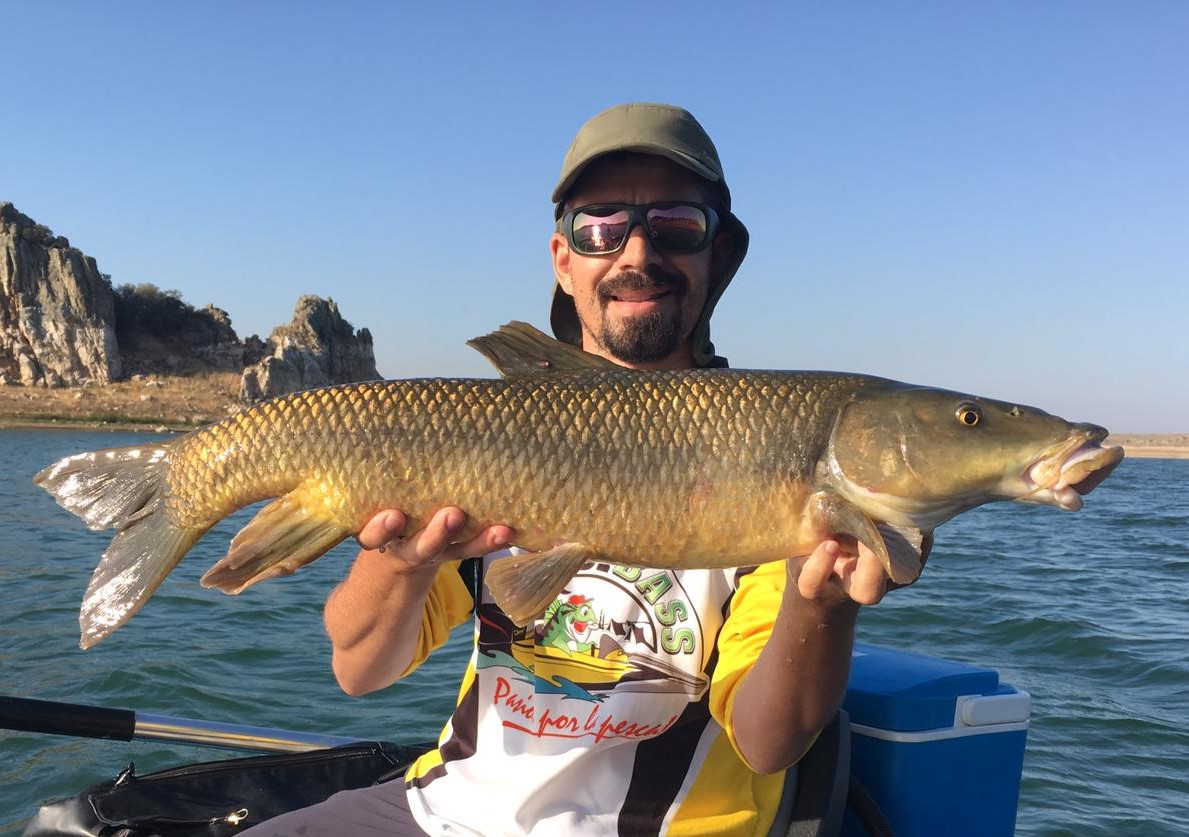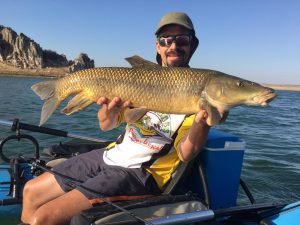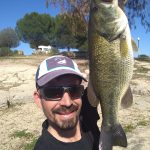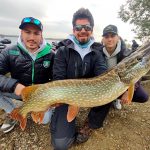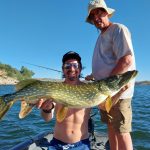Characteristics of Alange lake
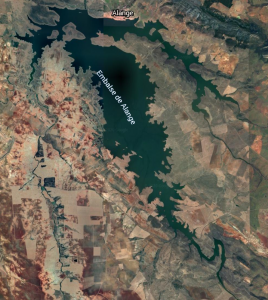
With a capacity of 825hm3 and an area of 5144 hectares, Alange lake is perhaps not one of the best known reservoirs, but it is home to quality fish. Its main peculiarity is that it has barely passed 600 hm3 since its construction and its average level is usually around 500 hm3, in the last few years not even that. Do you want to know the level in real time? Click here.
Its waters are not usually very clear as it has hardly any water input, and its main uses are supply, irrigation and electricity. As an interesting fact we could highlight the presence of the iberian lynx in adjacent areas.
Bottom composition and structures

The bottom of the reservoir is composed of various rocks: slate, quartzite, sandstone, schist… generally quite degraded so the bottom is very sandy and with areas full of small stones. It is a reservoir in general very shallow, with kilometric beaches and we only find important rocky structures in the surroundings of the dam. These rocky points are the only ones where we can find a certain depth near the shore.
These structures are mainly formed by large rocks, although we also find some stretches of shore with loose rocks and pebbles (riprap).
Vegetation and cover
There are not too many dry trees and they are mostly found at the highest levels of the reservoir, so we usually do not find much wood in the water, except for some isolated specimens of holm oak. In some sections we can also find eucalyptus.
Thanks to the stability in the levels (low levels) of the last years, it has begun to grow enough underwater vegetation, forming today an excellent cover for black bass and pike. Likewise, at the mouth of the Matachel River and some creeks we can also find some underwater plants.
Main fish species
Alange is a reservoir famous for its large pike, although several years ago there were major pollution episodes in which many specimens died.
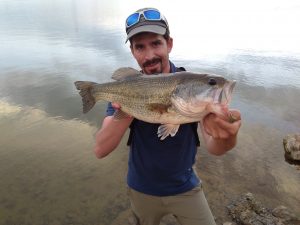
- Pike. Only a few years ago (between 2010 and 2016), the 80 to 100 cm specimens were frequent, and the reservoir had a very interesting population. Nowadays the density has dropped a lot, but even so from time to time some good specimens still come out.
- Black bass. It has always been present in the reservoir, although it is complicated to locate them in this reservoir of beaches and kilometric creeks. More and more frequently we find them associated with the growing algae, with a healthy and growing population. Occasionally we can catch fish over 2 kg, are frequent specimens between 1 and 1.5 kg and there are many small specimens so we can spend fun days.

Iberian barbel Alange - Iberian barbel. The barbel population is very good, with a really interesting average size, between 2 and 4 kg, and increasingly predatory habits. Some specimens reach very good sizes, being not rare the fish over 5 kg.
- Carp. The population of small and medium sized carp is very good, with occasional catches of carp over 20 kg. The most used techniques are carpfishing, feeder and match, with which we can also catch quite a lot of barbels.
Baitfish in Alange lake
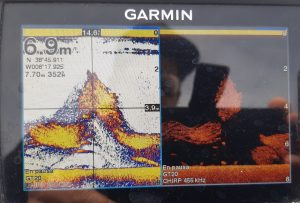
There is a very good population of bleak, especially in recent years, which is favouring the development of black bass and barbel populations. Despite the abundance of bleak, as mentioned above, the pike has not yet recovered as it hardly has any suitable spawning areas.
Crayfish and perch are also abundant in the reservoir, as well as cyprinids: mainly carp, barbel and carp.
Access and navigation
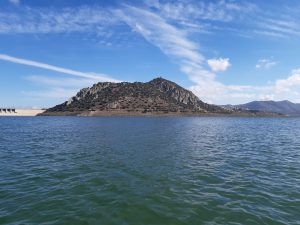
Navigation, both motorized and non-motorized, is allowed in practically the entire Alange reservoir, with some limitations (check the link).
The banks are very easy to walk on, 100% of them can be walked on comfortably, but there are certain limitations in terms of the number of accesses and their quality (large stretches of bank without roads nearby).
For fishing from a float tube or pontoon it is not necessary to apply for any navigation permit, because if they are less than 2.50m long they are considered as complements to bathing according to the current legislation (2024).

